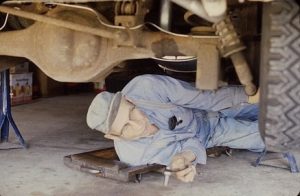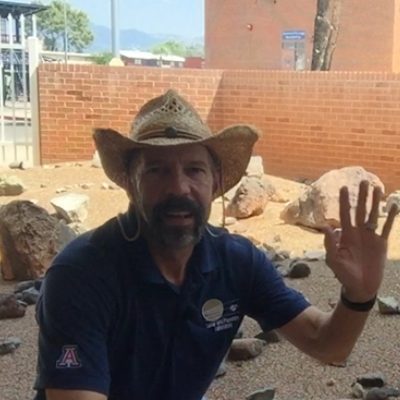2 Get Yourself a Group
The Power of Teaching and Learning in a Group
Steve Kortenkamp

People are social creatures. We tend to play, work, and learn in groups. When I was a kid my first group was my family, and it was huge: nine kids, more cousins than that, aunts and uncles, too. We were growing up together — learning from each other — teaching each other! My Grandpa — “Grandpa K,” we called him — was a farmer and then a car mechanic after they lost the farm. He taught me how to fix anything and everything, but only after I taught him how to teach me. You see, Grandpa K didn’t have a lot of patience at first. I’ll admit, that was probably my group’s fault — we were the ones who broke a lot of the things he fixed. Once we taught him patience — with some help from Grandma K — he became a great teacher. This first group of mine, my family, had a lot to learn and still does. But we also had important things to teach each other — and still do! Some of the most significant learning I’ve experienced throughout my life has come from the perspective of my groups, starting with this first family group.
Over time my groups changed — they evolved: Boy Scouts, track teams, BINGO club (ahh… BINGO club). I can’t pinpoint exactly when it happened, but one day in high school I found myself with a new group. It was that feeling you get when you realize, “Hey, this is more than just another class full of kids. I’ve got a new group!” This group was technically called shop class. We started with woodworking. Next came metalworking, then small engine repair. Our final year was automotive mechanics. In this school group, I was applying the mechanical concepts I learned on the farm from Grandpa K. I was also teaching these things to my group, as well as learning their techniques.
My shop class group was led by Marvin Goretski — we called him Mr. G for short. Mr. G was more than just the shop class teacher. He was also the physics and chemistry teacher. Now, I don’t know if it was Mr. G’s master plan or just a happy little accident, but much of my shop class group also studied physics and chemistry. Mr. G used the concepts we learned about everyday life — wood, metal, engines, cars — and applied them in our science classes. This content wasn’t in the syllabus or course objectives. Mr. G would have called it the “unwritten curriculum” — the science that connects our world. Imagine six-degrees of Kevin Bacon, but applied to physical concepts instead of Kevin Bacon: wood, wood grain, tree rings, tree growth, environment, seasons, climate, carbon dioxide, engines, cars, and so on. Okay, that’s nine-degrees of separation, but who’s counting? You get my point! Learning about connections in this way from Mr. G and my shop class group was probably a big factor in why I went on to study science in college.
For college I went to the University of Wisconsin, one of the smaller schools in a town with a French name — Eau Claire. Our mascot was the Blugold, but nobody knew what that was. “Go Wildcats!” is a much easier cheer to get behind. Moving away for college was a shock to my rhythm of life. I struggled without my groups. I got lousy grades, or worse. I questioned if I was on the right path. It took a while, but eventually I settled in with another group.
My new group at Eau Claire wasn’t a class or science club. It was the cross country and track team. Just like in my earlier groups, we learned from each other, and taught each other. This was a challenge, though. We were a much more diverse group than I had had before. There were runners from all walks of life and all kinds of majors — psychology, education, math, art, business. Nearly every night we all came together in a wing of the library to study and help each other. I realize only now, with hindsight, that in this setting we were applying Mr. G’s six-degrees technique: math majors tutoring art students, psych majors tutoring education students. To help one another we learned more effective ways of communicating by starting with connections to common everyday things — the equivalent of Mr. G’s wood, metal, engines, and cars. And just as before, my new group became a foundation and a strong motivation in school and life.
Now I’m at UA. I’m part of a group teaching Gen Ed in a new and exciting way. And you know what? We’re using Mr. G’s six-degrees technique to build connections between different groups and their various perspectives. How does science connect different elements of our cultures and societies? Where do art and astronomy overlap? How can the dynamics of personal relationships help us understand how gravity works? Whoa! That last one got you, didn’t it? UA students in my classes are connecting concepts like these as they learn to teach fellow Students On the Street: this communication technique — my class calls it SOS for short — involves teaching and learning by making connections between concepts that other UA students may more easily understand. We’re learning by teaching others in our group — in this case, students on the street.
My parting question for you is, “Who’s in your group and how do you learn from each other?”


